Born to Run
1November 17, 2012 by southerninversion
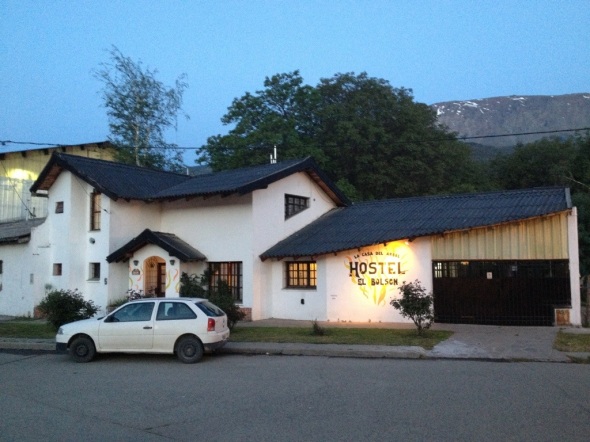
When I left the granja in Cholila, I couldn’t help feeling disappointed that things had not worked out as I had planned. It wasn’t even close to what I had built it up to be in my mind, although few things rarely are. This feeling of failure and negativity was quickly shed upon my arrival to the ‘Casa del Árbol’ hostel in El Bolsón. This place has, in effect, been my home away from home in the past month. This weekend, (now a week later), culminates my fourth consecutive weekend here, as I came each weekend during my farm stay. I have made some good friends here over the past month and met various travelers mostly from Buenos Aires, France, and the US passing through town each time I’ve stayed. However, each weekend there has also been a consistent crew of people I’ve kept up with, especially, Santiago (a guy from the Buenos Aires area who is working on a nearby farm doing straw bale construction), Nadia, (my friend who works at the hostel, enjoys giving me a hard time, but also has been so warm and kind to me), and Mark, (the ‘ultra’ running fanatic, from Louisiana, with no apparent southern accent). We have all shared stories, laughs, Asado BBQ dinners, and nights out at the bars listening to Argentinian versions of American blues by local bands.
I first met Mark a few weekends ago as he stormed into the kitchen wearing tight spandex running shorts, a neon orange sweat-wicking tee shirt, and smelling as if he was long overdue for a shower. He speaks a mile a minute sometimes, almost a fast as he can run, and most especially when the subject revolves around running or some broad aspect of the sport. He had arrived to Argentina more than five weeks before to Buenos Aires, and came to El Bolsón, after completing an intensive ESL (English as a Second Language) training seminar there. However, he left the city for the Patagonian mountains region, and decided to forego teaching, partly due to the fact that his timing was off, as most area schools had closed for the season. Instead, he had his sights set on working for a Refugio, (an isolated mountain cabin with provisions, beds, and showers for hikers), where he could train and practice endurance sprints through rigorous terrain. There are at least 10 Refugio’s scattered throughout the National Parks and mountain wilderness surrounding the quaint, little oasis, that is El Bolsón. These places are just as you would imagine a hobbit’s mountain hideaway to be: rustic, isolated, crafty, creative, eccentric, and cozy, with most of the creature comforts of home minus television, Internet, cell phone reception, and only sparse electricity. After spending last weekend hanging out and partying at the hostel, Mark and I decided to take a 4 day retreat to visit some of the Refugio’s in the Río Azul wilderness, that lies just beyond the outskirts of town.
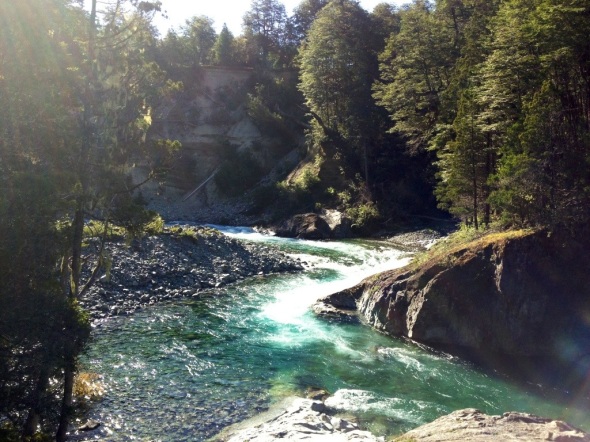 El Río Azul
El Río Azul
We left on Tuesday morning and took a city bus up the gravel road toward the Wharton estacionamiento (parking area). After walking a few brisk kilometers up and down a steep rolling grade, we ended up by the confluence of the Rio Azul and another small tributary. At this point it becomes necessary to walk across a rickety wooden bridge, that could best be compared to the bridge spanning the void in the final scene of ‘Indiana Jones and the Temple of Doom‘, (where it ultimately collapses into the muddy river below, as alligators eagerly await the next victim). In fact, every river crossing (5 or 6 total) was equally sketchy, with each bridge missing several slats or had broken slats hanging by a thread that we had to skip over.
After crossing the beautiful glacial melt, crystal blue river we came upon a friend of Mark’s, Romero, who was taking a siesta by the river and drinking maté. It is important to note at this point that I was immediately struck by this image and couldn’t help recalling the story of ‘Siddhartha‘, by Herman Hesse. This story recounts the journey of Buddha as a poor, young man, that travels in search of enlightenment, and yearns for wealth as the key to prosperity. After becoming rich and powerful he is still unhappy and later leaves all his wealth behind, longing for a simple life as a ferry boat porter, which he had originally scoffed at years before. Later he finds ultimate contentment and his inner peace once he has become kin with the wisdom of the river. He can hear it’s voice as he lays idle napping by the river. Ironically, this vision of Romero, as a wise sage, with a direct connection to the earth, and all it’s bountiful energy, was confirmed a few days later when we heard a story about him at the last Refugió we stayed at. It seems Romero, who is approximately 60 years old and missing several of his front teeth, had been a Refugió manager for many years over a decade ago. One night as he was staying at the Natación Refugió, he heard a voice calling out to him to take his belongings and get down the mountain immediately. He doubted the feeling initially, but eventually heeded the warning and fled down the mountain. Within an hour after leaving, there was a massive avalanche that annihilated the cabin, knocking the entire building into pieces, hundreds of yards down the escarpment. His decision to heed the warning ultimately saved his life and strengthened his connection with the earth and his inner voice. I was told he still meditates several hours a day and is an enlightened, wise, old man.
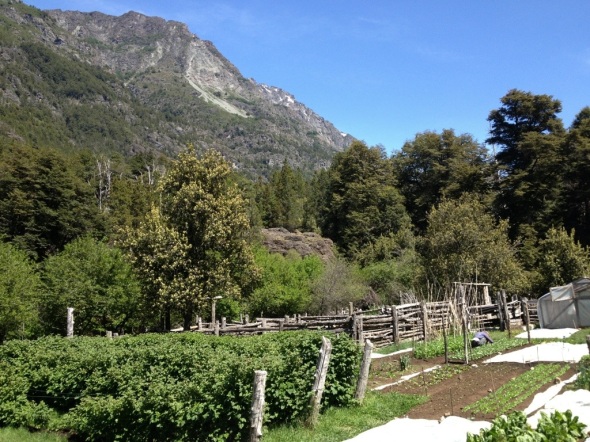 Los jardines al Cajón de Azul Refugio
Los jardines al Cajón de Azul Refugio
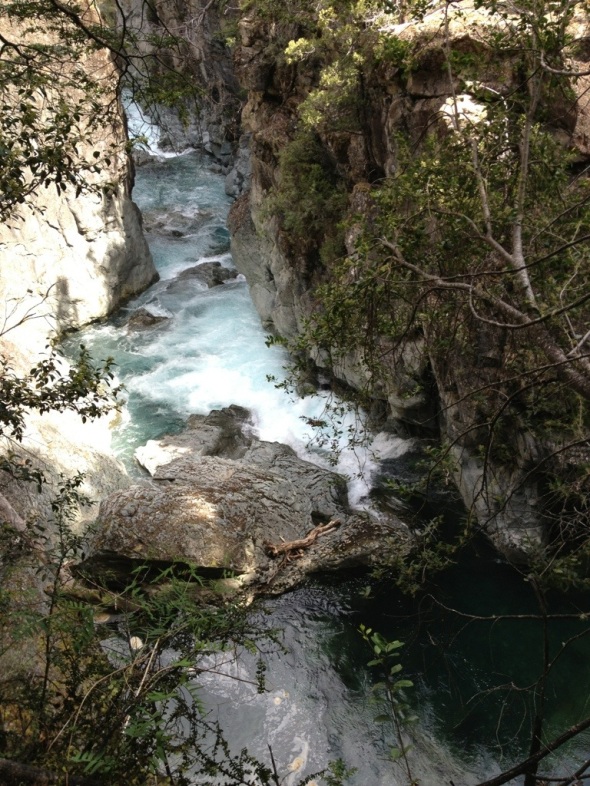 El Cajón de Azul
El Cajón de Azul
Following the casual meeting with Romero, I began to realize just how connected and emphatic Mark was about living on the mountain and volunteering for a Refugio. His exuberance was infectious, and his terrible slaying of the Spanish language (a mix of crude Spanglish), was equally comical and endearing, in that he was trying so hard. Each of the people we met, at every Refugio, had already met Mark at least 3 to 4 times, and had been petitioned for a chance for him to show just how serious he was about the job. Most of them thought he was both funny and slightly crazy due to the spandex running attire, his voracious persistence, and the fact that he ran for miles each day between the different refugios. However, his persistence finally paid off. After a 6 mile long hike uphill in to the Refugio Cajon de Azul, (Blue River Canyon), Mark then ran another mile or two up the steep climb to Retamal, (the second Refugio we stayed at), to speak with Mariano. He learned that he would be starting in a few weeks and he returned with a big Forrest Gump style grin on his face, as I cooked our white bean and broccoli stew on the wood stove.
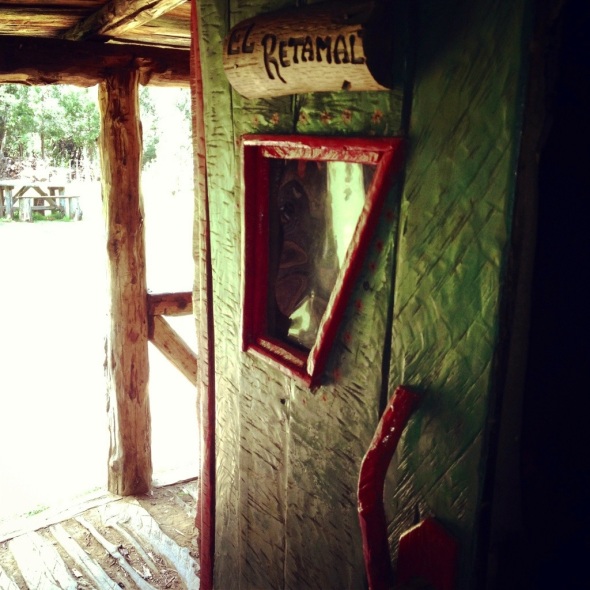
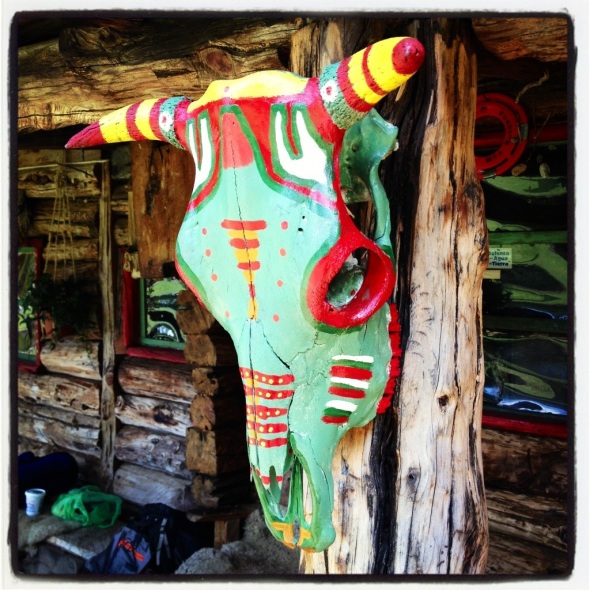
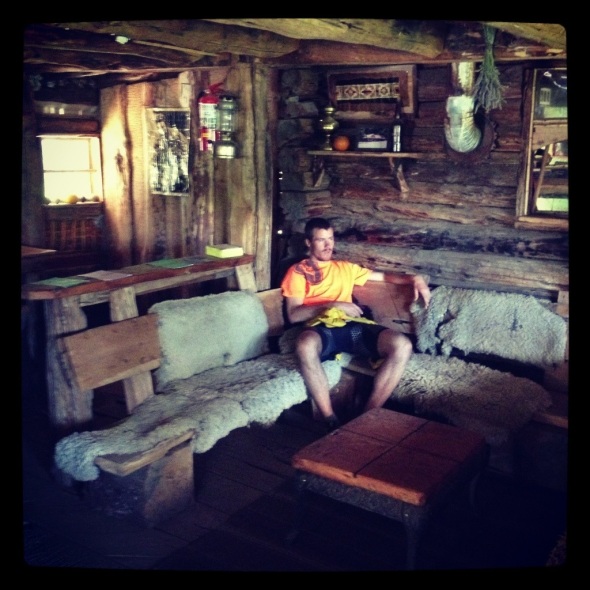
The location of the Refugio Retamal, is perfectly situated in the midst of several different Refugio’s and will allow him extended opportunity to run all over the place up there. Mark is obsessed with running, is ultra competitive, even in ping pong matches, and hates to lose. (The table tennis matches at the hostel have become fierce, with copious amounts of free time and everyone practicing constantly). Beyond just sprints, casual jogs to stay in shape, or even long distance marathons, Mark is more fixated on ‘Ultra’ running. This relatively new version of extreme foot racing, goes well beyond a typical marathon distance of 26.2 miles. These races typically cover 50 or 100 miles, and can go on for consecutive days, with the winner usually finishing around the 30 hour mark, for the longer distance races. Additionally, these races usually trespass rugged terrain through mountains, valleys, countryside, and even desert. This sport has apparently gained a lot of traction in the last several years, (pun intended), particularly due to the book ‘Born to Run’, written by Christopher McDougall. Mark recounted stories and the basic sentiment of the book over dinner the second night at Retamal, as we were joined by a lovely Spanish girl Cristina. Earlier that day we had visited another Refugio down the mountain, saw the ‘Nacimiento’ del Cajón de Azul (birth, or starting point of the canyon), and went for a bone chilling swim in 8 degree Celsius water.
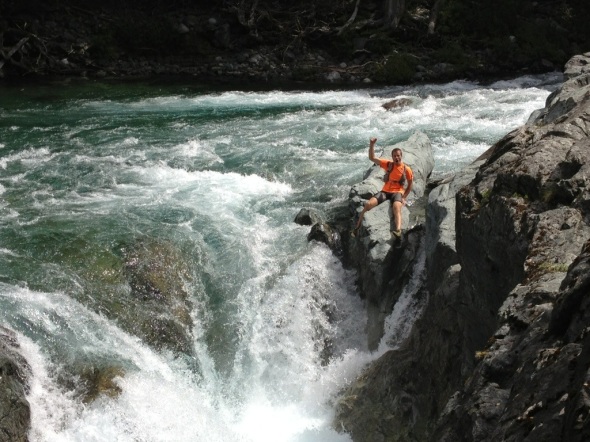 El Nacimiento del Cajón
El Nacimiento del Cajón
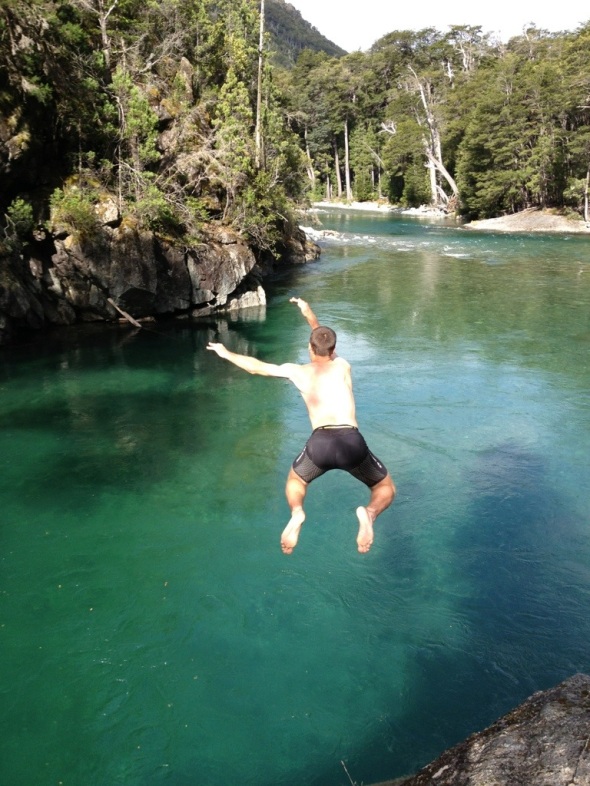
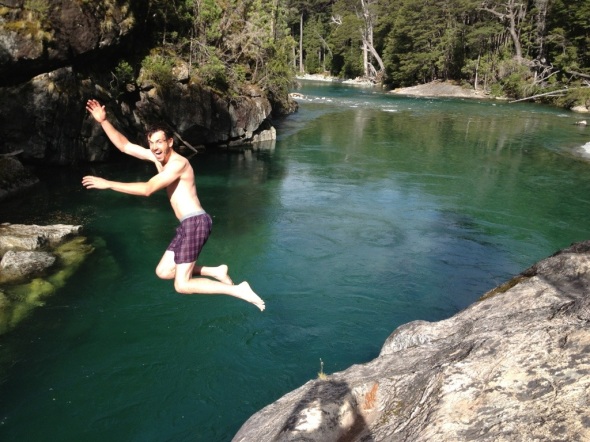 Swimming in the freezing cold río
Swimming in the freezing cold río
Basically, the book proposes the historical aspects of the human race as we know it, (Homo sapiens), and their evolutional supremacy over other primates based on their innate ability to run long distances. This allowed them to escape danger, catch prey, and to migrate from forests to grasslands. McDougal details his research of the reclusive Tarahumara tribe of Indians from the Copper Canyons of Mexico, who run for the pure joy, and consider it a spiritual experience. Moreover, the book relates the history of African tribes that have engaged in the rare art of persistence hunting, where a human literally outruns its prey. This is possible because most animals don’t sweat, and will overheat after enduring long distances. Whereas humans on the other hand, respire and sweat to maintain a more relative, constant body temperature, even in duress. I found this whole subject very interesting, mostly because I had never heard of ‘persistence hunting’, or even considered that a human could actually outrun an animal. For me, running has always been a means to an end, and I would do it only as necessary, if playing sports for instance, or more literally, if someone was chasing me! However, after the discussion, it left my mind reeling to ponder how remarkable the human body is from head to toe. The complexity of human anatomy and the feats that we are capable of when we put our mind toward a goal are both incredible and inspirational.
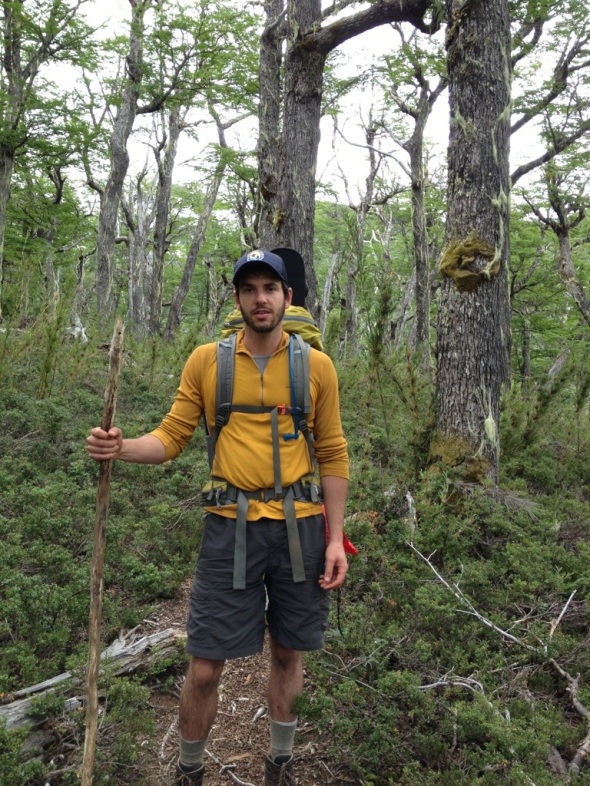 Ascending through the lichen forest
Ascending through the lichen forest
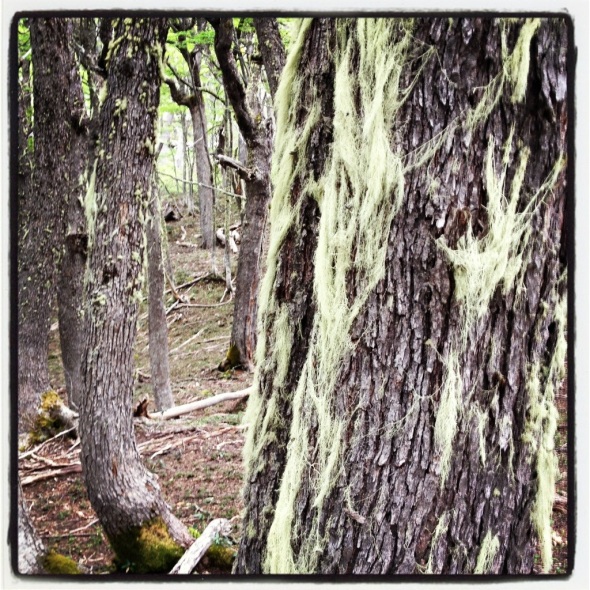
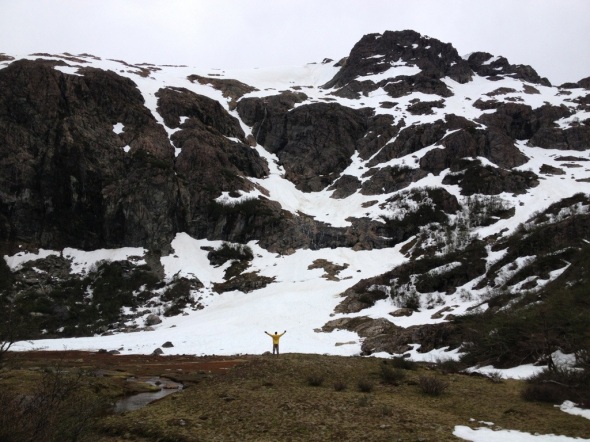 At the foot of Hielo Azul glacier
At the foot of Hielo Azul glacier
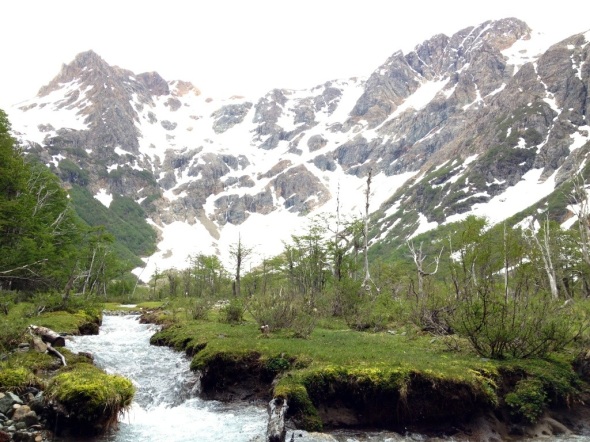
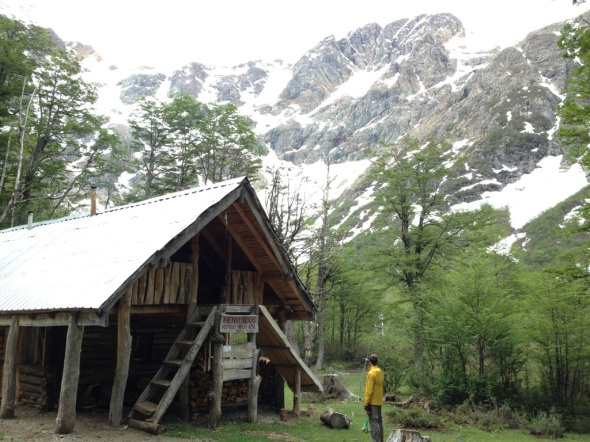 Refugio Hielo Azul
Refugio Hielo Azul
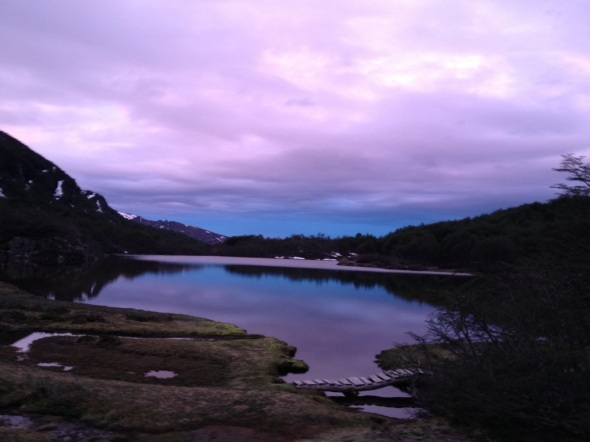
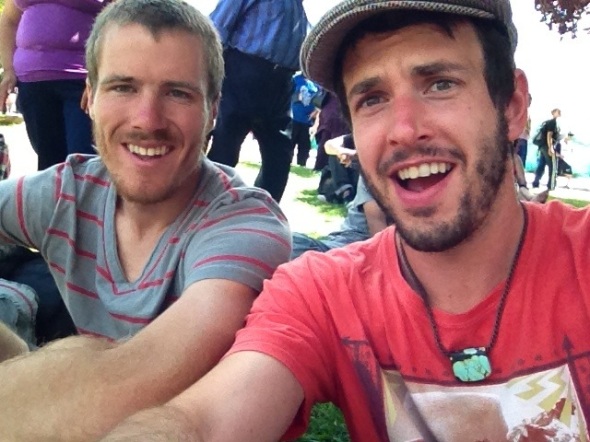
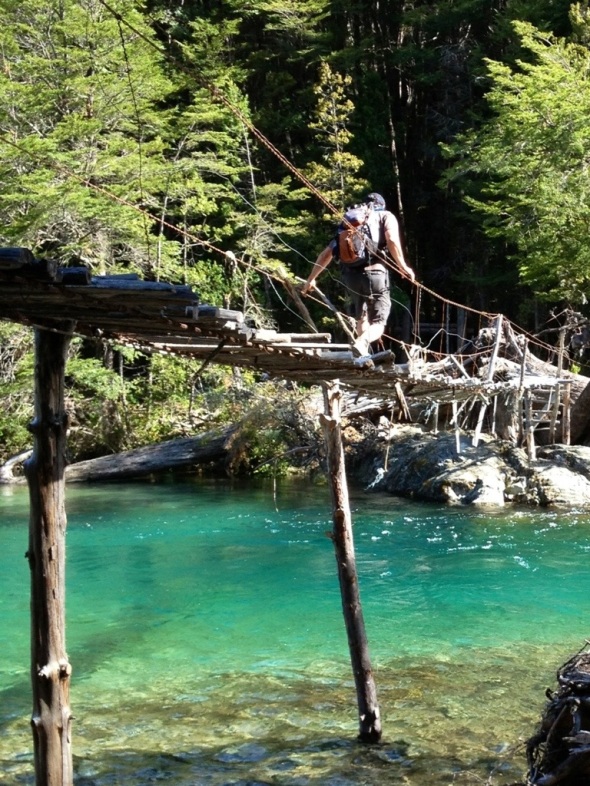
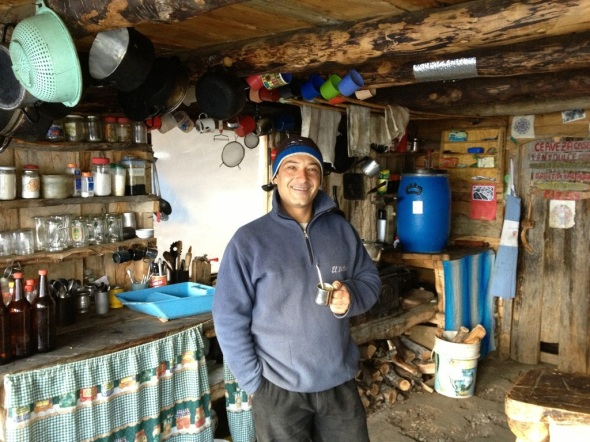
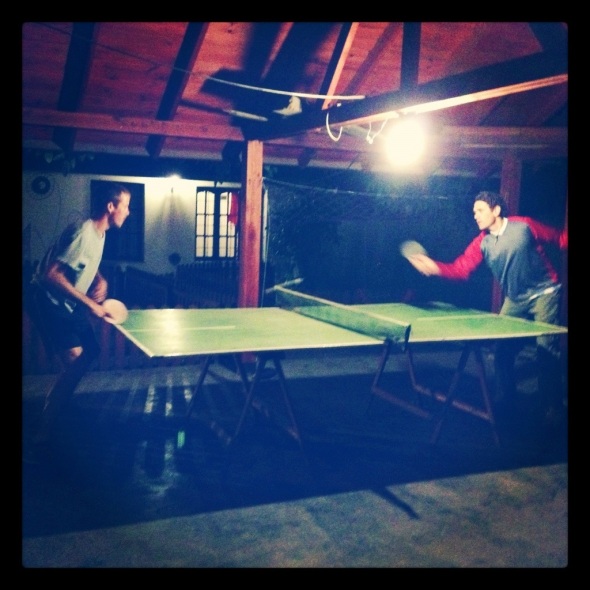
Looks like you’re participating in MOvmber from Argentina.. nice. Im deliciously jealous of your adventures. Thanks for posting.